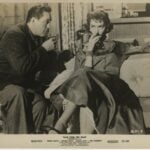Douglas Monce
Senior HTF Member
- Joined
- Nov 16, 2006
- Messages
- 5,511
- Real Name
- Douglas Monce
I thought I was already pretty specific. First of all I haven't been talking about compression at all. I'm talking strictly about the film transfer process. Grading is simply color and density correction.
There are times in the telecine process even on the best of equipment, and its actually fairly rare, where the grain of the film will interact with the scan lines of the video system. It's actually more pronounced in HD and it can cause strange patterns to show up as the grain slips in between the scan lines. Patterns that don't look anything like normal film grain. In this case a little judicious use of DNR can help the film look more natural.
I'm not talking about using a sledge hammer to make the film look super slick with no grain. I happen to like the look of film grain, but only if it looks the way it is supposed to.
To say that DNR and EE are bad is kind of like saying morphine is bad. Yeah if your addicted to it, but if you are going in for an operation, you might want a little.
Now the other thing is, has anyone ever thought that some of these films might have had extensive use of DNR on the home video version, because the director didn't like the way the video looked and asked for it? Frankly most directors are not very technical and just say "I don't like that, get rid of it." So the technicians do their best to give him or her what they want. This is one of the reasons that so many films lately, for example the Pirates films, don't look much like film at all. Though in that case the processing seems to have been done in the DI.
Doug







